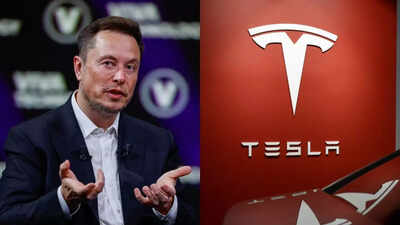ARTICLE AD BOX

Tesla
CEO Elon Musk recently made a bold announcement stating that around 80% of Tesla’s future company value will come from Optimus, Tesla’s
humanoid robot
project. This statement highlights Musk’s confidence in
Optimus
as a transformative technology with the potential to redefine Tesla’s business far beyond electric vehicles. While the company continues to face slowing EV sales and growing competition, Musk’s vision positions Tesla as a robotics and AI powerhouse, aiming to revolutionize
factory automation
, household tasks, and potentially many aspects of human labour.
Why Elon Musk is betting big on Optimus
Musk projects that Optimus could contribute approximately 80% of Tesla’s long-term valuation, with potential revenues exceeding $10 trillion. He sees Optimus as a “fundamental transformation” for society, envisioning a future of abundance where automation dramatically increases productivity and reduces scarcity. By integrating Optimus into Tesla factories, the company anticipates massive cost savings, potentially billions annually, while automating tasks traditionally done by human labor. Musk’s high-stakes bet on Optimus positions Tesla not merely as an automaker but as a leading
AI and robotics
innovator.
What is Elon Musk’s Tesla Optimus
Optimus is a humanoid robot developed by Tesla, designed to perform human-like physical tasks. Equipped with arms, hands, legs, and advanced navigation capabilities, Optimus leverages Tesla’s AI, battery, motor, and autonomous driving technology adapted from Tesla vehicles. First unveiled in 2021, prototypes were showcased in 2022 and 2023. Tesla envisions Optimus handling tasks in factories, homes, and workplaces, automating activities that are dangerous, repetitive, or mundane for humans. Its ability to learn tasks by observing human video tutorials gives it adaptability and “task extensibility,” allowing it to perform a wide variety of functions faster than traditional robots.
Current status and development timeline
Optimus is still in early development stages, with three prototypes expected by the end of 2025. Mass production is targeted for late 2026, with ambitions to produce up to one million units annually. Despite being pre-commercial, Optimus has already generated significant investor and media interest, shifting attention from Tesla’s electric vehicle business toward AI-driven robotics and automation.
Market positioning and financial implications
By prioritizing Optimus, Tesla is signaling a strategic pivot toward robotics and AI, potentially surpassing automotive sales in future scale and value. Factory automation with Optimus is expected to reduce labor costs substantially. Optimus is designed to work in factories, homes, and workplaces, handling dangerous, repetitive, or mundane tasks. Its learning method involves watching human video tutorials to perform versatile real-world tasks efficiently. The combination of advanced AI, autonomous driving software, battery, and motor technology adapted from Tesla vehicles makes Optimus a unique proposition in the robotics market. Musk envisions that Optimus could ultimately contribute over $10 trillion in long-term revenue and account for around 80% of Tesla’s total valuation.



.png)
.png)
.png)
















 16 hours ago
3
16 hours ago
3








 English (US) ·
English (US) ·